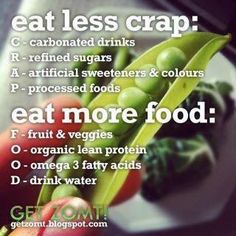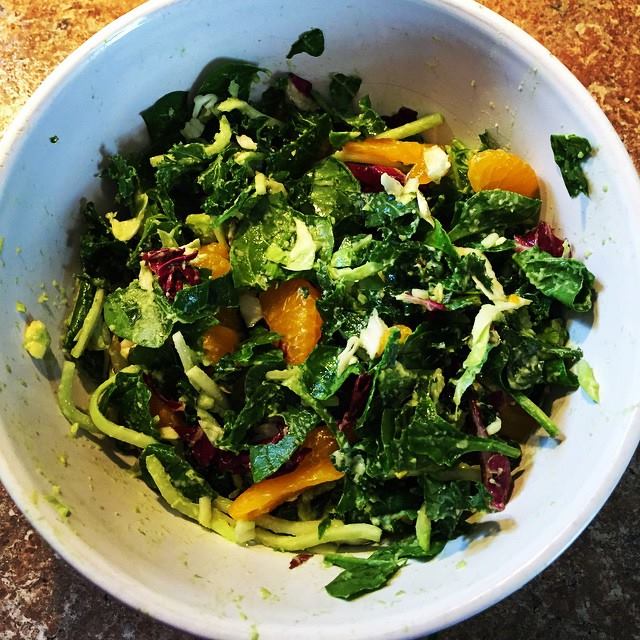Recently, I wrote a blog post concerning a campaign to end childhood obesity sponsored by Pioneering Healthier Communities, which depicted the exposed abdomens of overweight children with the phrases “Marion We Have a Problem…” and “1 in 3 of Our Fifth Graders are Obese” (don’t mind the grammatical errors, I try to ignore them).
So, I started looking into Pioneering Healthier Communities. I found that one of the programs that they support (I’m not sure if they sponsor it, but they do have info about it on their website) is the USDA Summer Food Service Program that takes place in Marion, Ohio school yards and community spaces during the summer months. Before I launch into this, let me say that I believe this is a much needed program, because kids need a way to get lunch during the summer — a meal they may not get otherwise.
However, when I saw what they were serving one day, I started to think, “You know, school and summer lunch program foods may be part of the obesity issue” — a point that has been well established in the past, even garnering attention from First Lady Michelle Obama. While I know that part of the responsibility falls on parents, we cannot blame them 100% for their children’s eating habits if their kids are eating things like this at school. Oh, I guess I should tell you what the meal was, huh? It was a hamburger, Fritos, a pickle spear, a fruit juice slushie, and a choice of regular or chocolate milk.
When I saw this lunch, I thought to myself, “How can PHC be supporting this program, when it is obviously perpetuating a culture of junk food for our kids?” So, I wrote this on PHC’s Facebook page:
I was just wondering if PHC has something in the works to better the food offered through the Summer Food Service Program. Today, the kids were served hamburgers, pickles, Fritos, and slushies. If this is what we are touting as a “healthy” meal, I think we are setting the kids up to fail before we even start. I mean, if PHC wants to fight childhood obesity, maybe the summer and school lunch programs would be a good place to start, especially since many kids have two meals a day at schools during the school year.
And yes, I know there are standards [Page 8]. But, how does the lunch I described fit into those standards?
When I saw that my questions had disappeared from PHC’s Facebook wall, I assumed that they had been erased. Apparently, it was only hidden or placed elsewhere, because this morning, I received a response from Marion City Schools Food Service Director, Winnie Brewer:
We do have standards that summer lunch must follow. The regulations are a little less stringent than the lunch program throughout the school year. We strive to meet the balance of serving a nutritious and something the children will actually eat. Sometimes the “healthy” side of the food is a bit hidden to make it appear more appealing to our kids. The hamburger is baked, not fried and served on a whole grain bun. The fritos are whole grain based and the slush cup is 100% fruit juice that qualifies as a fruit component. There was also a pickle spear in the lunch which is a vegetable that most kids will eat and low fat milk. Nutrition only works if the child actually eats the food. I would absolutely welcome any suggestions on food items that could fit into the summer lunch program as we strive to offer variety of menus that everyone will approve. Please keep in mind that preparation, delivery and service of the summer food meals is quite different than the regular school year. We are limited on what we can serve based on the health and safety standards of the foods transported to parks and playgrounds. It is served outside on picnic tables, not in a cafeteria.
Thank you,
Winnie
This brought up some more interesting questions and points for me, especially when it came to what was being provided for the kids, and what was considered nutritional. So, I felt the need to respond again this afternoon:
Thank you for the response to my questions. I appreciate your willingness to reply and accept suggestions. However, I do have some more questions first:
1) “Sometimes the ‘healthy’ side of food is a bit hidden to make it appear more appealing to kids.” – What kind of food culture does this set up for kids? If kids eat corn dogs, pizza, hamburgers, French fries, and chicken nuggets in school, and they believe they are getting a healthy meal, then what is stopping them from eating the same junk food when they are teens and adults? Where is the culture to teach kids about nutrition instead of giving in because they may not want to eat a vegetable if it looks like a vegetable? How does that teach children anything viable about nutrition, so they can then apply it to their own lives, or take it home to their families?
2) “The hamburger is baked” – That’s great, and I’m happy that you later mention the bun is whole grain. But, what is in the hamburger? What are the ingredients on the box? Do they come to you already formed, processed, frozen patties, or are you able to use fresh hamburger? Do you know what part of the cow you are serving to these children?
3) “the slush cup is 100% fruit juice…” – Why not give the children a piece of fruit? Did you know that a Harvard University study in 2013 concluded that eating certain whole fruits every week could decrease your risk of developing Type 2 Diabetes, while having two servings of fruit juice can increase your chances of developing it? Processed fruit juice loses many of the fruit’s nutrients, and all of the fiber, which makes it not as effective nutritionally as a serving of whole fruit.
4) “The pickle spear in the lunch which is considered a vegetable…” – So, in the same regard, is relish now considered a vegetable? Is ketchup considered a vegetable or fruit serving? While the main ingredient in a pickle is a cucumber, it also has many ingredients added to it to make it a pickle. It is laden with salt. One serving of dill pickles can have up to 20% of the daily value for sodium. How is this okay to feed to children as a vegetable? Do processed French fries and tater tots also count as a vegetable serving in meals?
5) “The Fritos are whole grain based…” – Once again, I refer back to point one. You are giving children chips as part of a “healthy meal”. If you do not teach them about true nutrition, do you think they will distinguish between whole grain based snacks and non-whole grain snacks outside of school or once they leave school? Not to mention, one serving of Fritos has 10g of fat and 170mg of sodium. And how are Fritos made? They are fried in corn oil. Frying something helps to negate the whole grain standard a little…don’t you think?
6) “and low fat milk…” – I am assuming that chocolate and regular milk were offered, correct? 1 cup of low fat chocolate milk (1/2 pint) approximately 25g of sugar. 1 cup of Pepsi has about 27g of sugar, while 1 cup of Sprite has about 25g of sugar. Granted, soda does not have the calcium and other nutrients that milk has, but why not only offer the regular milk? It doesn’t take a genius to know adding more sugar and flavoring to milk will get more kids to drink it. However, if a child has chocolate milk with breakfast and lunch for school every day for 180 days…and then has chocolate milk for lunch for 40 days during the summer – that is 10,000g of sugar a year, per child….just from milk. There has to be another way.
7) “Nutrition only works if the child actually eats the food.” – I have to say, this is the point that bothers me the most. Nutrition only works if the children are actually taught about nutrition. “Hiding nutrition” in foods that look like something else are not teaching them anything about nutrition or giving them life skills to carry forward into the future. I think the idea that “kids won’t eat that” is a mentality that schools and parents have adopted, which is why we are facing such an obesity crisis in this community. Schools are here to arm children with knowledge to take with them into the future – why should real nutrition be any different?
Now, I want your thoughts. What do you think about the status quo? Is it okay to feed kids processed junk food with disguised nutritional aspects instead of giving them real food and teaching them about nutrition? I would love to get some comments on this subject.


















